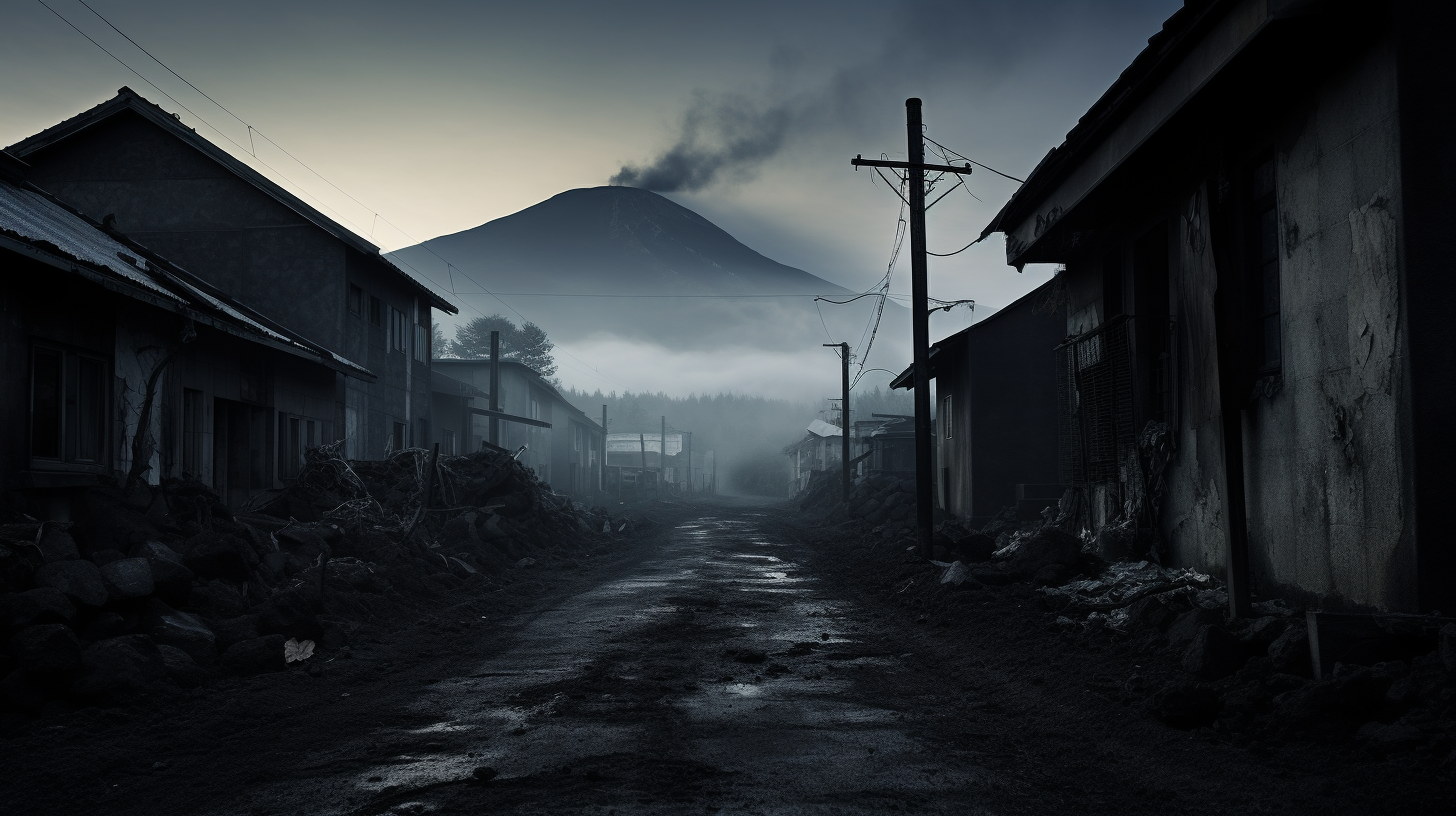The canvas of our world is often painted with the colors of catastrophe; a chilling blend where beauty and terror dance in a tango of survival. Nowhere is this interplay more starkly depicted than beneath the ashen skies of dormant giants – the world’s formidable volcanoes. Here, in the gloom of volcanic shadows, life thrives amidst the bleakness, crafting a landscape that captures the essence of dystopia.
Imagine waking to a sky tinged with gray, the sun’s fierce blaze reduced to a feeble glow by a veil of volcanic dust. This is the daily reality for residents along the slopes of these ticking time bombs, where even the air is tinged with the taste of sulfur and the horizon is a blur of smoky hazes. Yet, within this seemingly apocalyptic setting, there’s an unexpected flourish of life and commerce, painting an eerie beauty onto the canvas of despair.
Local markets brim with vibrant wares, tinged with ash but bustling nonetheless. Here, farmers have adapted their crops to grow in the fertile, mineral-rich soil that is a byproduct of the very eruptions that threaten their existence. Tourists flock, drawn by the enigmatic allure of Mother Nature’s raw power; somewhere between attraction and fear lies their captivation.
‘Living under a volcano is like being in a relationship with the Earth itself – unpredictable, powerful, and awe-inspiringly beautiful,’ remarks one resident. With their lives perennially perched on the precipice of disaster, these communities have become adept at balancing on the edge of the abyss.
Buildings, sturdily constructed, defy the logic of precariousness that underpins their foundation. There’s a sense of whimsy in the architecture, a defiance that screams resilience. Educational institutions even offer courses on volcanic survival – a curriculum that is perhaps as practical as it is foreboding.
But it’s not all picturesque gloom. There are tangible reminders of the volcanic wrath that once was: abandoned structures stand like ghosts, their windows darkened with layers of ash; forests that were once ablaze with greenery now wear a somber shade of gray. The silence in these spaces is heavy, imbued with the memories of nature’s fury.
Yet, the human spirit that shines through the haze is one of adaptation and perseverance. There are stories of hope woven through the catastrophe: a blacksmith who crafts metallic art from the refuse of eruptions, gardeners who coax blooms from the ashen soil, a community that finds solace and solidarity in shared predicaments. ‘This is our home, our heritage,’ they say with a strength that’s palpable, resonating with the stubborn beat of human continuity.
This world of volcanic shadows, while stark and poignant, serves as a poignant metaphor. It’s a reminder of the fragility of our existence and nature’s indomitable force. Yet, it’s also a testament to humanity’s capacity for finding beauty in desolation, for flowering amongst the ashes.
In the midst of this elegiac splendor, it’s integral to remember the potent message this life imparts. As visually arresting as it may be, the looming environmental repercussions and the very real threat of annihilation by these sleeping giants cannot be sidelined. It’s a precarious balance, a liminal space where humans etch out a living – a tightrope walk between admiration of nature’s might and dread of its potential havoc.
To dwell under the ashen skies is to accept a life of contradictions, where beauty is birthed from peril, and existence is a daily gamble with the Earth’s temper. In this juxtaposition, we find an unsettling portrait of a world not quite gone, a warning and a wonder, all woven into the somber tapestry of a Green Dystopia.
